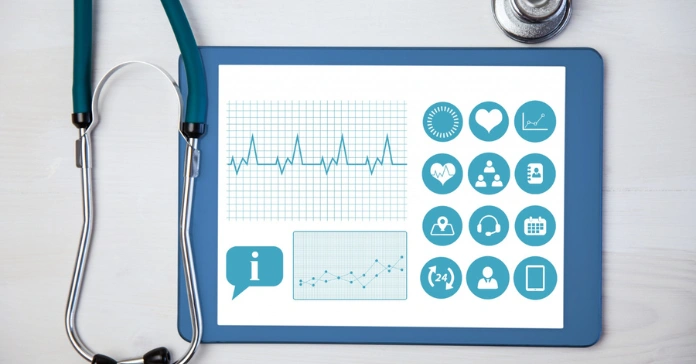The Billion-Dollar Healthcare CRM Rush Nobody Can Ignore
The healthcare industry is in the middle of a massive transformation, and CRM systems are at the core of it. Unlike retail or banking, healthcare data is highly fragmented, spread across EHRs, claims databases, remote monitoring devices, and even social determinants of health. To bridge these silos, healthcare organizations are pouring investments into CRM solutions that unify patient information.
Industry analysts value the global healthcare CRM market at around USD 17.9–20.9 billion today, with forecasts to exceed USD 30 billion by 2030. The growth is fueled by rising demand for patient engagement, telehealth support, and personalized care delivery.
Salesforce Health Cloud, positioned as a healthcare-specific CRM, is benefiting directly from this surge. By combining CRM capabilities with healthcare data models, it helps organizations create a single, longitudinal patient profile that drives both clinical decisions and business outcomes.
The Silent AI Takeover of Healthcare Operations
Behind the scenes, AI is quietly reshaping how healthcare is delivered and managed. Most patients interact with AI-driven processes without realizing it, from appointment reminders to insurance claim automation.
Recent reports highlight that AI adoption is strongest in administrative workflows like scheduling, outreach, and revenue cycle management, but is also expanding into clinical areas like predicting no-shows, readmissions, and even summarizing medical notes.
Salesforce has moved aggressively into this space. Its Health Cloud roadmap integrates AI models that:
- Prioritize care tasks for nurses and care coordinators.
- Generate patient summaries from complex health data.
- Trigger proactive outreach to at-risk populations.
Even financial analysts are tracking Salesforce’s AI investments closely, as they are seen as key drivers for future enterprise growth.

The FHIR Arms Race for Interoperability
Healthcare interoperability is no longer optional, it’s mandated by regulations and demanded by patients. The FHIR (Fast Healthcare Interoperability Resources) standard has become the backbone for exchanging clinical data across systems.
Salesforce Health Cloud leverages FHIR-first APIs to pull in data from electronic health records, payer systems, and IoT devices. This creates a single source of truth for patient data that can be used by multiple teams across the care continuum.
The benefits are clear:
- Fewer administrative bottlenecks caused by manual data reconciliation.
- Better care transitions, as data follows the patient across providers.
- Compliance with government interoperability rules, avoiding regulatory penalties.
By acting as the integration layer, Health Cloud positions itself as the data control center for modern healthcare ecosystems.
Patients Don’t Wait Anymore, Hybrid Journeys Rule
The pandemic rewired patient expectations. Patients now expect healthcare experiences to mirror consumer industries like banking or retail, where interactions are digital-first, real-time, and personalized.
Health Cloud enables providers to design hybrid patient journeys that combine digital outreach and in-person care. Examples include:
- Automated SMS and email reminders to reduce missed appointments.
- Telehealth scheduling and follow-up invitations delivered within patient apps.
- Personalized care pathways, where a diabetic patient might get a digital education module followed by an in-clinic nutrition visit.
Surveys show that the majority of health systems are actively investing in digital patient engagement technologies to meet these rising expectations and to protect revenue.
Data Is the New Prescription for Care Teams
The shift toward value-based care makes data more critical than ever. Payers and providers alike are judged not just on volume of services, but on measurable patient outcomes.
Health Cloud enables this by combining analytics with care coordination. Care managers receive worklists highlighting:
- High-risk cohorts needing proactive intervention.
- Gaps in preventive care, such as missed screenings.
- Follow-up tasks to ensure patients complete treatment plans.
Industry research confirms that outcome-driven analytics is now a top driver of healthcare CRM spending. With this data-first approach, care teams can focus less on paperwork and more on actual patient care.

The Big Picture: Key Trends in Salesforce Health Cloud
Here’s a consolidated list of the major Salesforce Health Cloud trends shaping 2025 and beyond:
1. Explosive Growth in Healthcare CRM Adoption
Healthcare CRM has shifted from a niche investment to a mainstream enterprise necessity. Recent reports estimate that the global healthcare CRM market was valued between USD 17.9–20.9 billion in 2023, with projections of surpassing USD 30 billion by 2030.
Salesforce Health Cloud is riding this wave by offering hospitals, payers, and life sciences companies a unified system for patient engagement, care team collaboration, and operational efficiency. Instead of fragmented touchpoints, providers can now manage patient journeys on a single platform. The growth is not only financial but strategic, healthcare organizations are increasingly positioning CRM systems as their digital front door.
2. AI and Automation Powering Administrative and Clinical Workflows
The healthcare sector is under massive strain with staffing shortages, growing patient volumes, and rising costs. To address this, AI and automation have become mission-critical. A 2024 industry survey revealed that AI adoption in healthcare operations is accelerating, particularly in documentation, scheduling, claims processing, and predictive analytics.
Salesforce has embedded Einstein AI into Health Cloud, delivering features like clinical note summarization, proactive patient alerts, and next-best-action recommendations. These capabilities reduce manual tasks for staff and free up time for patient care. For example, automated outreach can remind patients of appointments or flag care gaps, while predictive models anticipate readmissions. This trend highlights how Health Cloud is not just a data repository but an AI-powered orchestration hub.
3. FHIR-First Interoperability and Unified Patient Records
Interoperability has become a regulatory and operational mandate, with FHIR (Fast Healthcare Interoperability Resources) at the center of compliance. Healthcare organizations are expected to connect EHRs, lab systems, and payer data seamlessly, and Health Cloud has made FHIR-native integration a cornerstone of its offering.
This means providers can unify fragmented patient records into a single longitudinal view. A care coordinator can see clinical data, claims history, and even remote monitoring inputs on one dashboard. Beyond compliance, this creates a strategic edge: faster referrals, fewer administrative delays, and more personalized care journeys. In an era where data liquidity defines patient experience, FHIR-first Health Cloud adoption is becoming non-negotiable.
4. Digital-First, Hybrid Patient Engagement Models
The pandemic reset patient expectations permanently. Patients now demand a mix of in-person and digital care, with convenience as the deciding factor. Surveys indicate that most healthcare systems are investing heavily in digital-first engagement tools such as chatbots, SMS reminders, and telehealth platforms.
Salesforce Health Cloud supports these hybrid care models by enabling patient outreach across multiple channels while integrating those touchpoints with clinical workflows. For example, a patient might book a telehealth appointment via a mobile app, receive a personalized SMS follow-up, and later transition seamlessly into an in-clinic visit, all logged within Health Cloud. This shift ensures that providers remain competitive in an industry where patient experience is the new currency.
5. Outcome-Driven Analytics and Care Coordination at Scale
Data is the new prescription for healthcare teams. Rather than reactive treatment, organizations are embracing outcome-driven analytics to proactively manage chronic conditions, reduce readmissions, and optimize resource allocation. Market analysts confirm that analytics and population health insights are among the fastest-growing healthcare CRM capabilities.
Health Cloud plays a key role by generating actionable insights:
- Identifying at-risk patients using predictive scores
- Prioritizing outreach tasks for care managers
- Tracking population-level health outcomes
- Automating escalations for unresolved cases
This approach transforms Health Cloud into a control center for care coordination, enabling providers to scale operations while improving clinical outcomes.
6. Security, Compliance, and Governance as Enterprise Adoption Accelerates
As Health Cloud adoption scales across payers, providers, and pharma, security and compliance have become front and center. With regulations like HIPAA, GDPR, and regional privacy mandates, enterprises need platforms that can guarantee governance.
Salesforce Health Cloud is designed with enterprise-grade compliance baked in, including audit trails, secure APIs, and role-based access. Governance frameworks also allow healthcare organizations to control data-sharing policies across departments and partners. With the rise of AI and patient data mobility, compliance is evolving from a regulatory necessity to a strategic trust differentiator.

Conclusion: Why Salesforce Health Cloud Is Becoming Healthcare’s Control Tower
The healthcare industry is under intense pressure to do more with less, reduce costs, improve outcomes, and satisfy digitally savvy patients. Salesforce Health Cloud is emerging as a control tower for healthcare operations, orchestrating everything from patient engagement to clinical workflows.
Organizations adopting Health Cloud report improvements in patient satisfaction, operational efficiency, and compliance readiness. The message is clear: those who embrace it now will be better positioned to thrive in a world where data, AI, and patient-centricity define competitive advantage.
Further, click on the link to check the frequently asked questions related to Salesforce Health Cloud.



